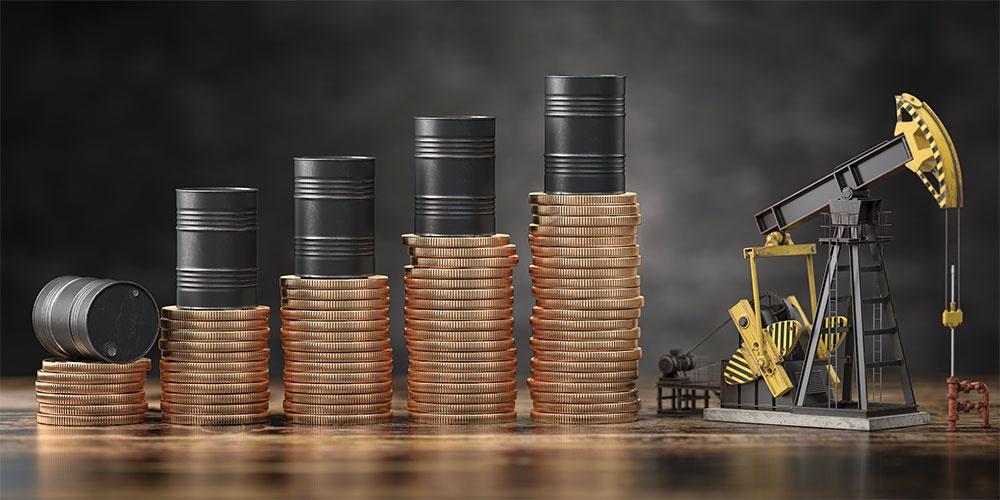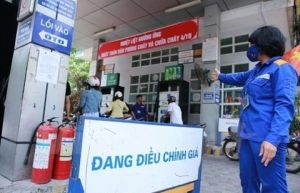Stabilisation fund not the true answer for reducing costs in the petrol market
As the oil price reached $30-35 per barrel – higher than the gasoline price – the retail price of oil in Vietnam was higher than the gasoline price, for the first time. The average price of gasoline in the world stands at around $105 per barrel while oil is sold for $143 per barrel.
 |
| The fund was designed to balance or reduce volatility transmission of global prices to domestic ones, Photo: Shutterstock |
During the last few years, the government has done a good job in publicising calculations on domestic selling prices, import prices, and exchange rates, as well as setting up the stabilisation funds. But in the current context, the petrol stabilisation fund does not help anyone to reduce costs. It only takes capital first, and then returns it to users at another time.
The objective of the fund, as the name implies, is to stabilise or reduce the transmission of volatility in global prices to domestic ones. Other goals, if any, are secondary. The fund discharge is usually carried out when the world price of the previous period increases, and the fund is deducted when the world price of the previous period decreases.
Of course, this approach does not necessarily reduce the volatility of domestic prices.
For example, if the price of the previous period increased but remained below the average price in the long term, then the release of funds further slows down the convergence of domestic prices to the average price, thus increasing volatility.
Similarly, if the previous period’s price has fallen but is still above the long-term average, then setting aside the fund further slows it down to the average price. Thus, to reduce volatility in domestic prices, the fund must be used so that domestic prices hover as close to the average price as possible.
The results of the calculation of the coefficient of variation, a measure of the price volatility of gasoline, also clearly show this. After using the fund, the coefficient of variation of different types of gasoline, diesel, and kerosene have certain values. If the fund is not used, the corresponding coefficient values would be altered.
Thus, operating the fund reduces the price volatility of RON95, diesel, and kerosene, but increases the price volatility of E5RON92 and fuel oil. However, the difference in the price movement between using the fund and not using the fund the price is quite small.
In addition, although the prices of petrol and oil always fluctuate together, not all of them have to be deducted or discharged at the same time. In the same period, there are certain types of petrol and oil that must be deducted, some not, and some are discharged regularly and are relatively arbitrary.
Looking at the market, E5RON92 and RON95 gasoline are less harmful to the environment than other commonly discharged fuels. From January 1, 2020, to April 1, 2022, with all 56 price adjustments, E5RON92 gasoline had funds released 43 times and paid into the fund only 13 times.
Since 2020, on average, E5RON92 gasoline received about 3.4 US cents per litre from the fund and RON95 gasoline received 0.46 US cents per litre. Meanwhile, diesel oil and kerosene had to pay about 0.6 US cents and 0.5 US cents per litre to the fund. This means that the petrol stabilisation fund is effectively redistributing.
It is also not good to use the excuse of protecting the environment to redistribute in this way because all types of petrol have been subject to the environmental protection tax.
If one wants to distinguish different levels of harm, one should apply different tax rates for each type of gasoline.
In fact, E5RON92 gasoline has a lower environmental tax rate than other types. The distinction between E5RON92 and RON95 can be partly understood as they are interchangeable, and it seems that the regulator is using the fund to promote the consumption of E5RON92. It is even more confusing as oil products have no alternative, and are subsidising RON95 and E5RON92.
 | Economists petrol stabilisation fund to be scrapped Economists and industry experts have voiced concerns over the petrol stabilisation fund continuing as a tool to keep prices down, deeming it too ineffective to make a real difference. |
(*)Assoc. Prof. Pham The Anh National Economics University
What the stars mean:
★ Poor ★ ★ Promising ★★★ Good ★★★★ Very good ★★★★★ Exceptional
 Tag:
Tag:
Related Contents
Latest News
More News
- Businesses ramp up production as year-end orders surge (December 30, 2025 | 10:05)
- Vietjet chairwoman awarded Labour Hero title (December 29, 2025 | 13:06)
- How to unlock ESG value through green innovation (December 29, 2025 | 10:03)
- AI reshapes media and advertising industry (December 29, 2025 | 08:33)
- FPT and GELEX sign deal to develop blockchain tech for global markets (December 29, 2025 | 08:29)
- Vietnam’s GDP forecast to grow by 9 per cent in 2026 (December 29, 2025 | 08:29)
- Women entrepreneurs are key to Vietnam’s economic growth (December 29, 2025 | 08:00)
- Vietnam's top 500 value-creating enterprises announced (December 27, 2025 | 08:00)
- The PAN Group shaping a better future with ESG strategy (December 26, 2025 | 09:00)
- Masan Consumer officially lists on HSX, marking the next phase of value creation (December 25, 2025 | 13:20)





















 Mobile Version
Mobile Version